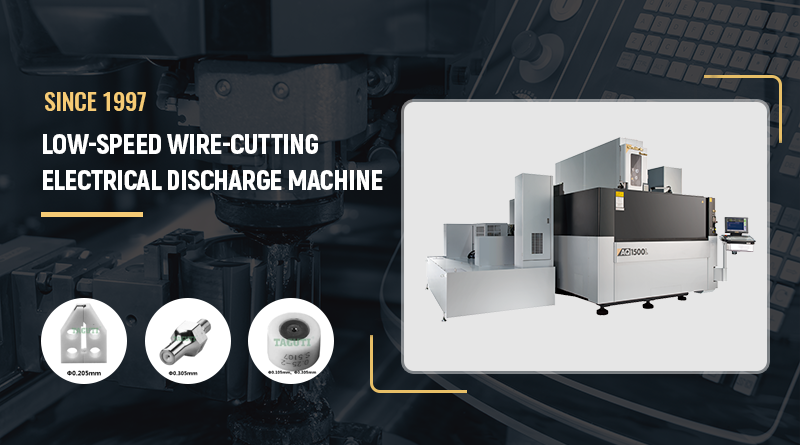In addition to the electrode wire and working fluid, the phenomenon of wire breakage in LSWEDM is also related to other factors, such as wire speed, precision, feed speed, material of the workpiece, and so on. Therefore, in order to reduce broken wires during wire cutting, different materials should be selected with corresponding processing parameters.
1、 Wire speed
The wire speed directly affects the stay time of the wire electrode in the processing area and the number of discharges, thus affecting the loss of the wire electrode. Due to the small diameter of the electrode wire in wire cutting, if the electrode wire moves too slowly, multiple discharges may occur at a certain point on the electrode wire, which makes the amount of erosion at this point too large. It is very easy to break the wire.
In addition, improve the wire speed of the heating wire can make the working fluid easily brought to the narrow processing gap, strengthen the cooling of the electrode wire, and take the electric corrosion product out of the gap. However, if the wire speed is too high, the vibration of the electrode wire will be increased, and the wire will be easily broken, which will reduce the precision of the processed surface and increase the surface roughness value. Therefore, under the condition that the wire electrode allows a small number of continuous discharges, the wire speed should be adjusted correctly according to the discharge frequency in combination with the thickness of the workpiece. .

2、 Feed rate
The ideal wire cutting should be that the feed speed to tracks its wire processing speed. If the feed is too fast, exceeding the possible erosion speed of the workpiece, it is easy to cause frequent short circuits, the cutting speed is slow, and the surface roughness of the workpiece is also poor. and the upper and lower end face slits are scorched yellow, or even broken wires.
If the feed is too slow and lags behind the possible erosion speed of the workpiece, it is easy to cause frequent open circuit.s. Over-tracking and under-tracking are both direct factors that cause unstable processing, which is easy to cause broken wires and affect surface processing quality.
3、 Feed accuracy
To achieve ideal tracking feed, it is necessary to improve the performance of the feed control system and manually adjust the optimal feed. The precision of the wire guide mechanism will directly affect the quality of the wire electrode, and low precision will cause deviation, vibration, and wire breakage.The wire guide mechanism of the wire cutting machine is mainly composed of a wire storage tube, a wire rack and a guide wheel. When the accuracy of the wire guide mechanism decreases, it will cause radial runout and axial movement of the wire storage drum. The radial runout will reduce the tension of the electrode wire, causing the wire to loosen, and in severe cases, the wire will come out of the groove of the guide wheel and be broken. Axial movement will make the wire arrangement uneven and cause the phenomenon of overlapping wires. If the rigidity of the wire frame is poor, it will vibrate and swing during movement, which will not only affect the accuracy but also cause broken wires.
4、 Material and diameter of electrode wire
Electrode wire materials include copper, tungsten, molybdenum, tungsten-molybdenum alloy, etc., and its service life is about 20%-30% higher than that of molybdenum wire, and the phenomenon of broken wire is significantly reduced. In order to reduce broken wires, tungsten-molybdenum alloy electrode wires can be selected preferentially, because the elongation, tensile strength and melting point of tungsten are more suitable for wire cutting than molybdenum. For slow wire walking, 0.12-0.30mm galvanized brass wire can be used for high productivity, allowing a larger peak current. If the tension of the electrode wire can be kept uniform, the vibration is small, and the processing is stable, the precision of the workpiece and the surface roughness will be correspondingly better, and the service life of the electrode wire will be relatively long.

